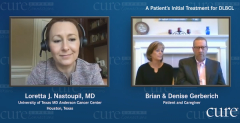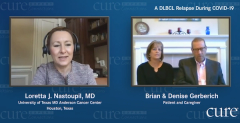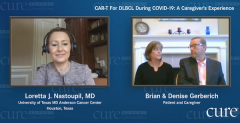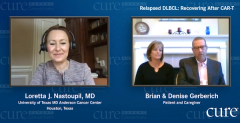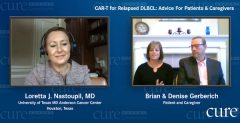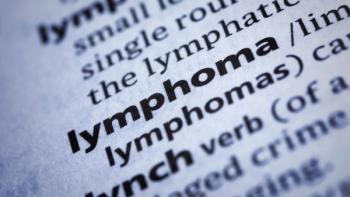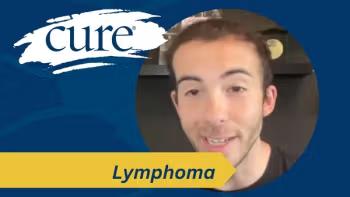
Managing DLBCL: A Team Effort
Episodes in this series

Loretta J. Nastoupil, MD: Brian was diagnosed and treated near his hometown, and I was contacted after he had failed what we consider standard therapy. He had failed the bendamustine rituximab and R-CHOP [rituximab, cyclophosphamide, doxorubicin, vincristine, prednisone] and even stem cell transplant. At that point, the next step in the management of his care was either consideration of a clinical trial or CAR [chimeric antigen receptor]-T cell therapy.
There are a number of other agents that have recently been FDA [Food and Drug Administration] approved for the management of large cell lymphoma. But at the time of Brian’s relapse, these were not readily available.
I was contacted by his local oncologist who specifically was interested in consideration of CAR-T cell therapy for Brian. CAR-T cell therapy is something that is administered at a referral or tertiary center, and most of the centers that are administering CAR-T right now are the same centers that administer stem cell transplants, so most of them are FACT [Foundation for the Accreditation of Cellular Therapy] accredited.
There are two FDA-approved products; they differ in terms of their construct, so how they’re stimulated once they engage their target. There’s a third that’s anticipated to be FDA approved, maybe as soon as this month. That one probably has the most favorable safety profile. There are some discussions about whether that construct could move out of the transplant centers and potentially even into community centers, including one where Brian was treated.
But as of right now, most of our patients who are considered for CAR-T, there is a working relationship between the primary oncologist and the referral or tertiary center, such as myself. We generally will identify patients as to whether they’re candidates for CAR-T, request insurance approval, and get them through the collection, manufacturing, cell infusion in the first 30 days.
Once they hit that 30-day mark, unless there is ongoing toxicity, my general practice is to refer them the patients back to their local oncologist, mostly for the convenience of the patient, and also to facilitate a relationship with those primary oncologists who are on the front line seeing all cancer types, and are important to foster that relationship since they’re the ones who are potentially identifying patients who might be referred to us.
Brian is now back under the care of his local or primary oncologist, though we stay in close communication, and he and his local oncologist both know that if there is ever any sign of either lymphoma or toxicity, I’ll be the first phone call. Brian, do you think that’s a fair summary?
Brian Gerberich: It is. It really is. I’m back with our primary oncologist, and he is doing a great job of keeping track of blood work and laboratory tests and watching me very closely, and he is very encouraging.
Transcript Edited for Clarity

